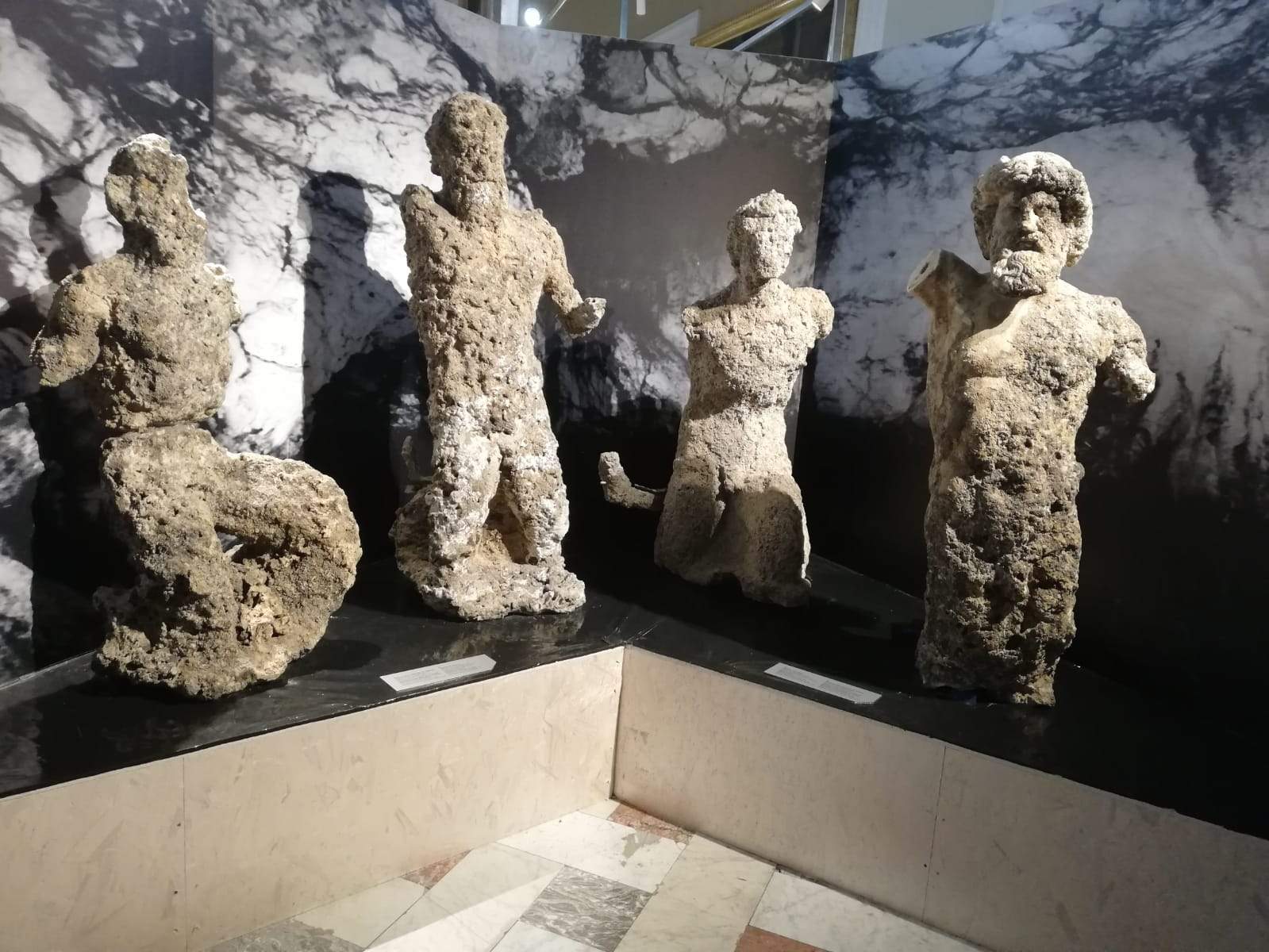Thalassa, submerged wonders from the Mediterranean, an exhibition dedicated to the achievements of underwater archaeology, is now open at the National Archaeological Museum in Naples and will run from Dec. 12, 2019, until March 9, 2020.
In the Sundial Hall, the journey begins through a portal, prompting visitors to almost cross the Pillars of Hercules. The exhibition, which represents a true summa of what has been unveiled by the discipline of underwater archaeology from 1950 until today, brings together about four hundred artifacts, from prestigious Italian and international institutions. The symbolic center of the exhibition is theFarnese Atlas, a marble masterpiece dating back to the second century A.D.: in fact, the visitor’s itinerary, with staging artifices and light effects, follows the constellations represented in the upper part of the sculpture, following, in an evocative artistic route between past and present, the modus of ancient sailors who oriented their voyage by following the sky. The guiding thread of this original itinerary is the discovery of the Mediterranean, which, since the earliest historical roots of Western civilizations, was interpreted (and experienced) according to different meanings: culture, economy, society, religiosity, nature and landscape are terms that have always been linked to Mare Nostrum.
Thus the theme of interconnectedness (of temporal dimensions, disciplines, scientific content and languages of communication) has characterized Thalassa’s exhibition project since its genesis: the exhibition was born, in fact, in the broader context of collaboration between the MANN and theSicilian Region’s Department of Cultural Heritage and Identity; this synergy was made possible thanks to the efforts of Professor Sebastiano Tusa, an internationally renowned archaeologist who died tragically in the March 2019 air disaster. Teichos. Services and Technologies for Archaeology developed the scientific design of the exhibit, curated by Paolo Giulierini, Sebastiano Tusa, Salvatore Agizza, Luigi Fozzati, and Valeria Li Vigni. The exhibit was also promoted in a network with the Paestum Archaeological Park, home of its “twin” exhibit Poseidonia. Cities of Water on Archaeology and Climate Change, and with theCampi Flegrei Archaeological Park, which hosts the exhibit on The Pioneers of Underwater Archaeology in the Phlegrean Area and Sicily.
“Thalassa is not only an exhibition on the ancient Mediterranean,” says MANN Director Paolo Giulierini, “but it is, above all, an example of method. At the center of our work is scientific research, support between state and territorial entities, the contribution of universities, the professionalism of young archaeologists, and the innovative actions of private technological companies. Overall, Thalassa draws cultural routes between many sites in Campania, the South and other Mediterranean countries. This is a historical connection, but it must reinforce the idea that Mare Nostrum is a bridge and not a separation. We all have a task to do: to fish out the report card that the child who tragically drowned a few months ago carried with him. This report card, in fact, is not about him: it is about us. We are the ones under scrutiny now: we will have no other opportunity to show that culture, too, can make people grow, through research that leads us to a maturation not only in content but in ethics.”
For all information you can visit MANN’s official website.
 |
| At the MANN in Naples here is Thalassa, a major exhibition on the achievements of underwater archaeology |
Warning: the translation into English of the original Italian article was created using automatic tools. We undertake to review all articles, but we do not guarantee the total absence of inaccuracies in the translation due to the program. You can find the original by clicking on the ITA button. If you find any mistake,please contact us.